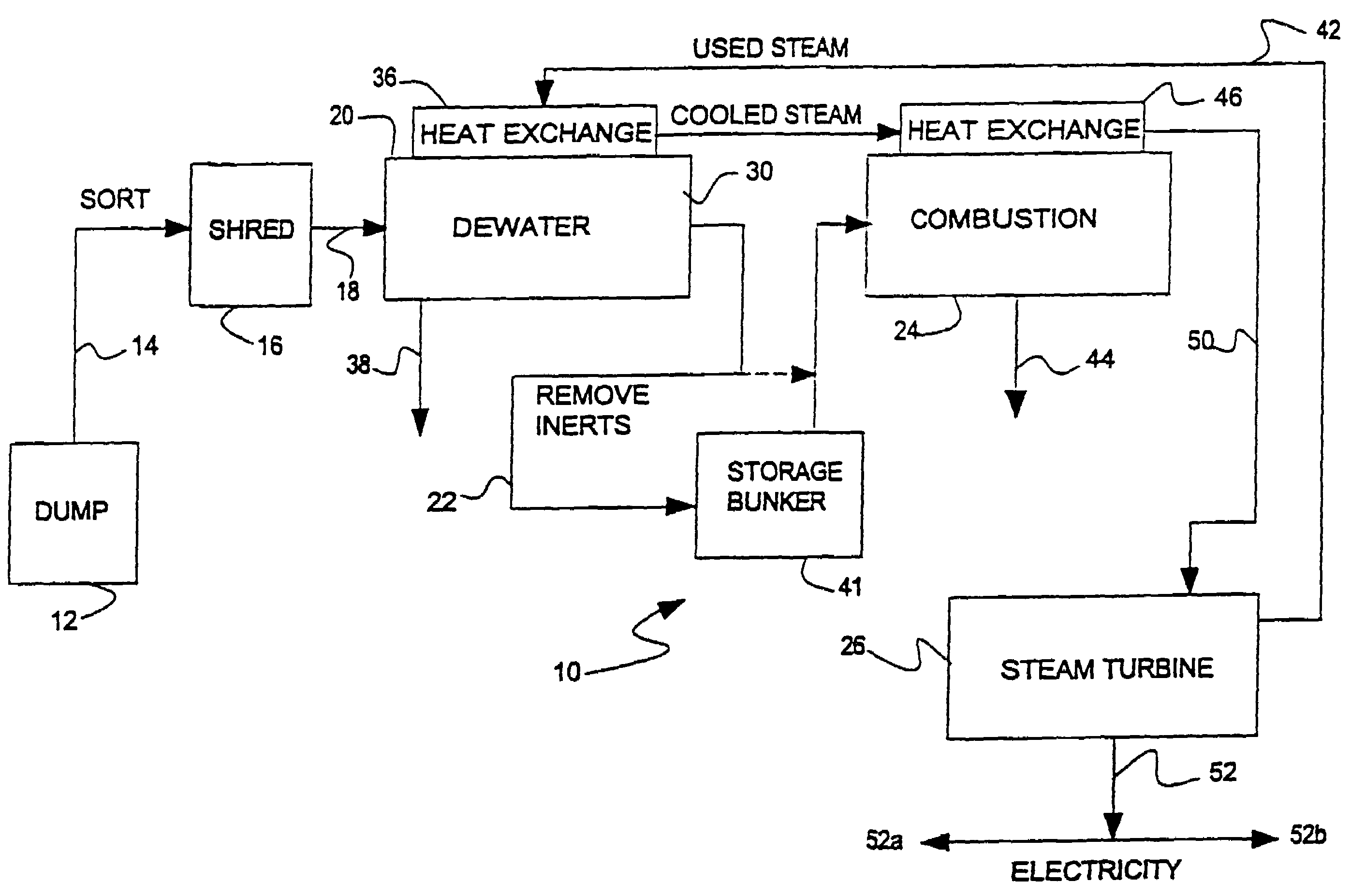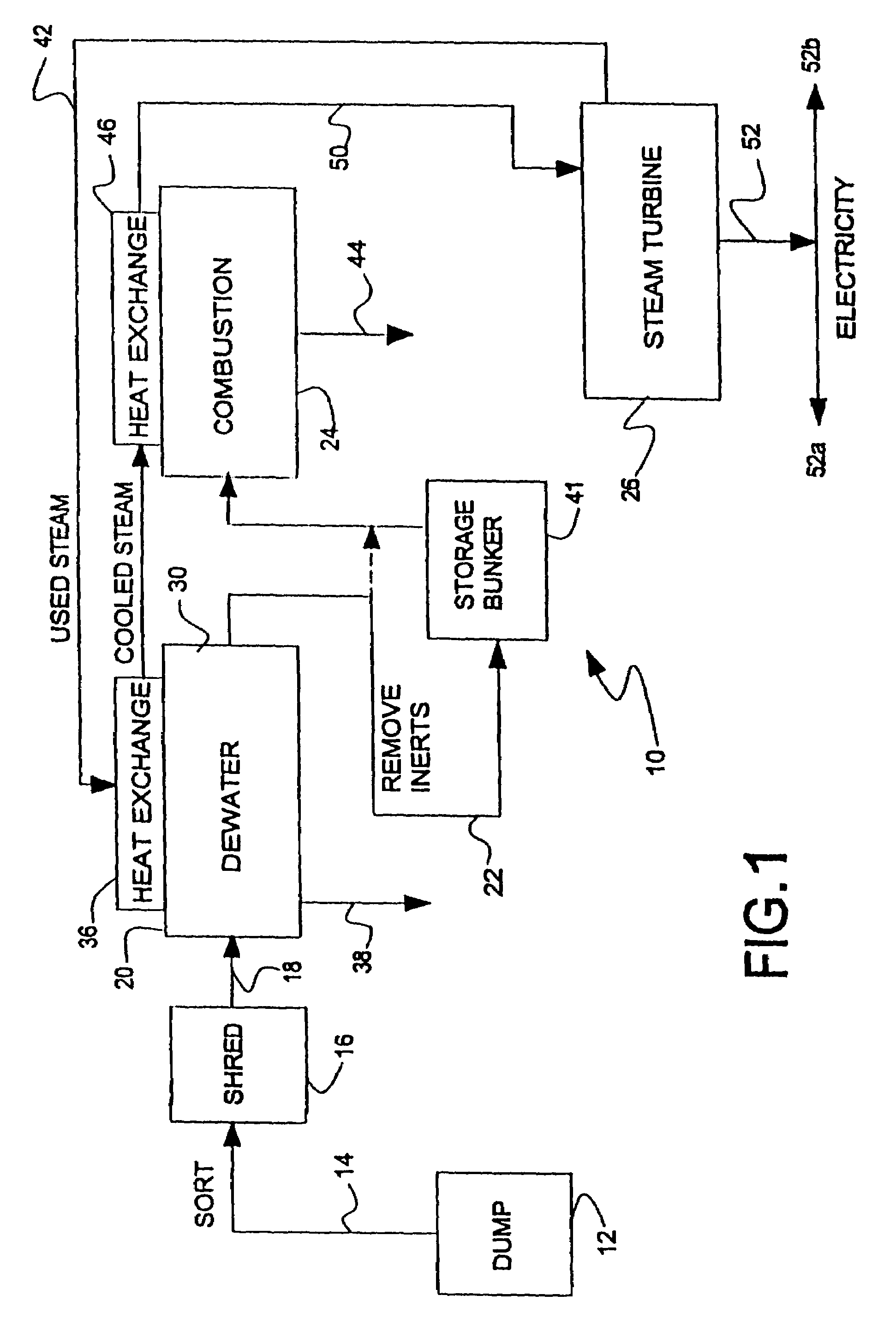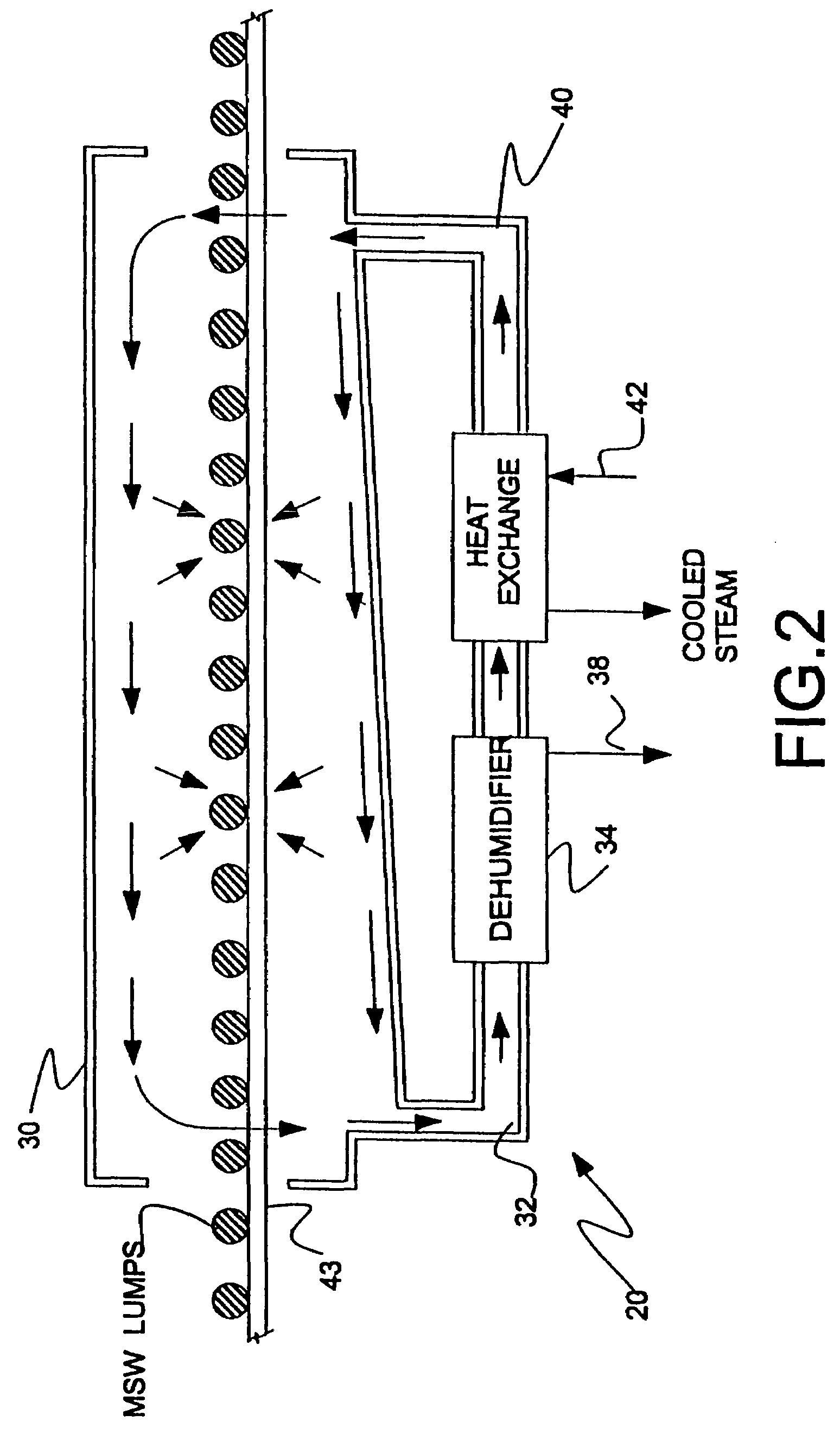MSW disposal process and apparatus using gasification
- Summary
- Abstract
- Description
- Claims
- Application Information
AI Technical Summary
Benefits of technology
Problems solved by technology
Method used
Image
Examples
Embodiment Construction
[0022]As illustrated in FIG. 1, the MSW disposal system 10 of this invention comprises a dumping and sorting platform 12, a conveyor 14 connecting to a shredder or chopper 16, a conveyor 18 connecting to a dewatering chamber 20, a conveyor 22 connecting to a gasification chamber or vessel 24, and a steam or gas-powered electric generator or turbine 26. In operation, MSW is dumped onto sorting platform 12 and placed on a conveyor 14, where large, readily removable unwanted content is removed. The residue is then conveyed to chopper 16, where it is chopped into pieces that are less than 6 inches in diameter. Conveyors suitable for adaptation for use in this process are made by Machinex Recycling Conveyors, Pickering, Ontario, Canada. A portable version of shredding equipment suitable for adaptation for use in this system is made by SHRED-TECH, Cambridge, Ontario, Canada.
[0023]The chopped MSW is conveyed by conveyor 18 into the closed dewatering chamber 20, where warm, dry air is passe...
PUM
 Login to View More
Login to View More Abstract
Description
Claims
Application Information
 Login to View More
Login to View More - R&D
- Intellectual Property
- Life Sciences
- Materials
- Tech Scout
- Unparalleled Data Quality
- Higher Quality Content
- 60% Fewer Hallucinations
Browse by: Latest US Patents, China's latest patents, Technical Efficacy Thesaurus, Application Domain, Technology Topic, Popular Technical Reports.
© 2025 PatSnap. All rights reserved.Legal|Privacy policy|Modern Slavery Act Transparency Statement|Sitemap|About US| Contact US: help@patsnap.com



